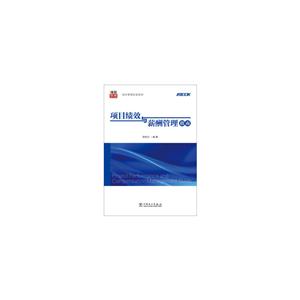Sustainable Biofuels-可持续生物能源

|
Sustainable Biofuels-可持续生物能源作者:巴德瓦杰 开 本:16开 书号ISBN:9787040411218 定价:129.0 出版时间:2015-03-01 出版社:高等教育出版社 |
sustainability issues
4.1 introduction
4.2 systematics and global distribution.
4.3 vegetative growth and sexual reproduction
4.4 optimal and sub-optimal climate and growth conditions
4.5 propagation
4.6 uses and abuses of jcl
4.6.1 traditional non-fuel uses
4.6.2 feedstock for biofuels
4.6.3 utilization of jcl byproducts
4.7 jcl as a sustainable alternative to fossil fuels
4.7.1 environmental impacts
4.7.2 socioeconomic impacts
4.8 significance of irrigation and fertilization for jcl cultivation
4.8.1 effects of irrigation on pot-grown jcl plants
4.8.2 effects of irrigation on field-grown jcl plants
4.8.3 effects of fertilization on jcl plants
4.9 conclusions
references
5 environmental aspects of willow cultivation for
bioenergy
5.1 introduction
5.2 willow plantations
5.3 carbon sequestration and greenhouse gas fluxes
5.3.1 estimates of growth and carbon sequestration
5.3.2 eddy flux measurements
5.3.3 closing the carbon budget
5.3.4 the fertilization effect
5.3.5 what are the limits?
5.3.6 substitution efficiency and climate effect
5.4 conclusions
references
part iii biofuels and biogeochemical impacts
6 short rotation forestry for energy production in italy:
environmental aspects and new perspectives of
use in biofuel industry
6.1 introduction
6.2 ecological services provided by srf
6.2.1 buffer strips and ecological corridors.
6.2.2 fertirrigation: disposal of livestock, urban and
industrial wastewaters
6.2.3 soil erosion control
6.2.4 co2 uptake and carbon sequestration
6.3 biofuel production and srf
6.4 conclusions
references
7 populus and salix grown in a short-rotation coppice for
bioenergy: ecophysiology, aboveground productivity, and
stand-level water use efficiency
7.1 introduction
7.2 water use of src
7.3 water use efficiency of src
7.4 wue and related ecophysiological variables literature surveys
7.5 case study: populus in the bohemian-moravian highlands
7.5.1 introduction
7.5.2 site and stand description
7.5.3 methods
7.5.4 results and discussion
7.6 conclusions
references
part iv biofuels and natural resource management
8 afforestation of salt-affected marginal lands with
indigenous tree species for sustainable biomass and
bioenergy production
8.1 introduction
8.2 origin and distribution of salt-affected soils in india
8.3 properties of salt-affected soils
8.4 natural vegetation on salt-affected soils
8.5 management practices for afforestation on salt-affected soils
8.5.1 selection of tree species
8.5.2 pre-planting management strategies
8.5.3 planting techniques
8.5.4 post-planting management strategies
8.6 biomass production
8.6.1 saline soils
8.6.2 sodic soils
8.7 bioenergy production
8.8 soil amelioration
8.9 conclusions
references
9 bioenergy and prospects for phytoremediation
9.1 introduction
9.2 bioenergy systems for soil phytoremediation
9.2.1 phytoextraction of heavy metals
9.2.2 srcs and rhizodegradation of organic pollution
9.3 bioenergy systems for water phytoremediation
9.3.1 phytoremediation systems with municipal wastewater
9.3.2 phytoremediation systems with landfill leachate
references
part v life cycle assessment principles
10 eight principles of uncertainty for life cycle assessment of
biofuel systems
10.1 introduction: regulatory lca
10.2 eight principles of uncertainty for lca of biofuel systems
10.3 principle 1: biofuel production is a complex system of systems
10.4 principle 2: standardized lca methods for biofuels do not exist
10.5 principle 3: empirical data are scarce for most aspects of biofuels,
10.6 principle 4: local biofuel lcas reduce uncertainty and errors
10.7 principle 5: sensitive parameters cause order of
magnitude changes
10.7.1 biorefinery natural gas efficiency-
10.7.2 agricultural n20 emissions
10.7.3 soil organic carbon dynamics and co2 emissions,
10.7.4 setting an uncertainty standard for biofuel lca
10.8 principle 6: indirect emissions are numerous and
highly uncertain
10.8.1 indirect land use change
10.8.2 multiple indirect effects and global economic forecasting
10.9 principle 7: transparency is essential for regulatory lca
10.10 principle 8: fossil fuel reference systems are diverse and
uncertain
i10.11 conclusions
references
11 energy and ghg emission assessments of biodiesel
production in mato grosso, brazil
工业技术 能源与动力工程
在线阅读
- 最新内容
- 相关内容
- 网友推荐
- 图文推荐
上一篇:现代数据通信原理与技术探析
下一篇:化工园区风险管理与事故应急辅助决策技术
零零教育社区:论坛热帖子
| [高考] 2022 西安电子科技大学《软件工程》大作业答案 (2022-04-25) |
| [家长教育] 孩子为什么会和父母感情疏离? (2019-07-14) |
| [教师分享] 给远方姐姐的一封信 (2018-11-07) |
| [教师分享] 伸缩门 (2018-11-07) |
| [教师分享] 回家乡 (2018-11-07) |
| [教师分享] 是风味也是人间 (2018-11-07) |
| [教师分享] 一句格言的启示 (2018-11-07) |
| [教师分享] 无规矩不成方圆 (2018-11-07) |
| [教师分享] 第十届全国教育名家论坛有感(二) (2018-11-07) |
| [教师分享] 贪玩的小狗 (2018-11-07) |






